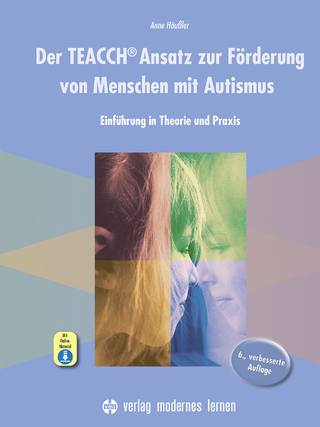
The Handbook of Non-Invasive Transcranial Brain Stimulation in the Cognitive Domain
Academic Press Inc (Verlag)
978-0-443-26602-7 (ISBN)
- Noch nicht erschienen (ca. August 2025)
- Versandkostenfrei innerhalb Deutschlands
- Auch auf Rechnung
- Verfügbarkeit in der Filiale vor Ort prüfen
- Artikel merken
Vincent Van Waes graduated from the University of Lille, France, with a Master degree in Cognitive Science. He earned in 2008 the PhD degree in Neuroscience from the University of Lille, France, in collaboration with the Sapienza University of Roma, Italy (European Label). Following postdoctoral work at the Department of Cellular and Molecular Pharmacology of the Chicago Medical School, North Chicago, USA, he joined in 2010 the University of Bourgogne-Franche Comté, France as a Research Assistant Professor (Maître de Conférences) in the Laboratory of Integrative and Clinical Neuroscience and was appointed Full Professor in 2017. Andrea Antal graduated from Attal Jozsef University of Szeged, Hungary, in Biology. She earned her PhD in 1998 in Biological Sciences from the University of Szeged, Hungary. She has an extensive background in research and training in the fields of neurology and clinical neurophysiology. Beginning in 2001, she has had a pivotal role in establishing and coordinating the activities of the visual laboratory, and later the pain laboratory in Göttingen. She is the head of the Non-Invasive Brain Stimulation (NBS Lab) laboratory at the University Medical Center Göttingen, Germany an experienced researcher in the field of cortical plasticity and brain stimulation, with a H-Index of 70. Chris Baeken is currently a professor at the University of Ghent. He also works as a psychiatrist specializing in the neurobiological field of Affective Disorders. Jean-Pascal Lefaucheur is a university Professor and Hospital Practitioner at CH Henri Mondor. His interest is in developing innovative therapeutic strategies, both pharmacological and neurostimulation-based, that could correct neurological disorders. Alexander T. Sack graduated from Frankfurt University, Germany with a Master of Science in Psychology (2000) and PhD in Natural Sciences (2003). He completed several international postdoctoral and academic research positions before being appointed as Professor of Brain Stimulation and Applied Cognitive Neuroscience at the Faculty of Psychology & Neuroscience, Maastricht University, The Netherlands in 2011. As the Principal Investigator of the research section “Brain Stimulation and Cognition at the Maastricht Brain Imaging Centre, his research focuses on the neurobiological and psychological principles underlying attention, learning, memory, and cognitive control; combining various brain research techniques, ranging from psychophysics and eye-tracking, to functional Magnetic Resonance Imaging (fMRI), Electroencephalography (EEG), and Noninvasive Brain Stimulation (NIBS). His group pioneered the development of simultaneously implemented TMS-fMRI-EEG during cognitive behavior, allowing to apply brain-stimulation while recording the individual brain network (fMRI) and oscillation (EEG) responses of cognitively engaged participants. This multimodal brain stimulation approach allows to investigate the neural network dynamics underlying human cognition in healthy volunteers and to translate these findings into clinical applications for treating various neurological and neuropsychiatric brain disorders.
Part 1 – Methods
1. The principles and methods of non-invasive transcranial brain stimulation
2. How to design a NIBS study in the cognitive domain: pitfalls
Part 2 – Preclinic – Psychophysiology A. Animals
3. Use of tDCS, rTMS, and TUS in Rodents: Contributions to Understanding the Neurobiological Mechanisms Involved
4. Use of tDCS, rTMS, and TUS in Non-Human Primates: Contributions to Understanding the Neurobiological Mechanisms Involved
5. Implications of tDCS in Alleviating Psychiatric Disorders: Insights from Animal Models
6. Implications of tDCS in Alleviating Psychiatric Disorders: Insights from Animal Models
7. Use of tDCS to Treat Neurological Disorders: Insights from Animal Studies.
8. Implication of Glial Cells in the Effects of tDCS in Mice
9. NIBS and neuroplasticity / Blood-Brain Barrier Permeability in rodent
10. Accelerated rTMS in the canine species B. Healthy
11. Non-invasive transcranial brain stimulation for the study of Perception and ATTENTION
12. Non-invasive transcranial brain stimulation for the study of REASONING / COMPUTATION / PROBLEM SOLVING
13. Non-invasive transcranial brain stimulation for the study of DECISION MAKING
14. Non-invasive transcranial brain stimulation for the study of MEMORY
15. Non-invasive transcranial brain stimulation for the study of LEARNING
16. Non-invasive transcranial brain stimulation for the study of LANGUAGE
17. Non-invasive transcranial brain stimulation for NEUROENHANCEMENT
Part 3 – Therapeutic Applications (Cognition)
18. Non-invasive transcranial brain stimulation to treat ATTENTION DISORDERS (ADHD)
19. Non-invasive transcranial brain stimulation to treat AUTISM SPECTRUM DISORDERS
20. Non-invasive transcranial brain stimulation to treat ADDICTION
21. Non-invasive transcranial brain stimulation to treat MOOD / PTSD
22. Non-invasive transcranial brain stimulation to treat ANXIETY / OCD
23. Non-invasive transcranial brain stimulation to treat PSYCHOSIS
24. Non-invasive transcranial brain stimulation to treat COGNITIVE ASPECTS OF OTHER PSYCHIATRIC DISEASES
25. Non-invasive transcranial brain stimulation to treat VISUOSPATIAL NEGLECT
26. Non-invasive transcranial brain stimulation for LANGUAGE REHABILITATION
27. Non-invasive transcranial brain stimulation to treat MILD COGNITIVE IMPAIRMENT & DEMENTIA
28. Non-invasive transcranial brain stimulation to treat COGNITIVE ASPECTS OF TRAUMATIC BRAIN INJURY
29. Non-invasive transcranial brain stimulation to treat COGNITIVE ASPECTS OF MULTIPLE SCLEROSIS
30. Non-invasive transcranial brain stimulation to treat CHRONIC FATIGUE SYNDROME and POST-COVID FATIGUE
31. Non-invasive transcranial brain stimulation to treat COGNITIVE ASPECTS OF CHRONIC PAIN SYNDROMES
32. Non-invasive transcranial brain stimulation to treat COGNITIVE ASPECTS OF OTHER NEUROLOGICAL DISEASES
Part 4 – Ethics/Regulation
| Erscheint lt. Verlag | 1.8.2025 |
|---|---|
| Reihe/Serie | Handbook of Behavioral Neuroscience |
| Verlagsort | San Diego |
| Sprache | englisch |
| Maße | 216 x 276 mm |
| Themenwelt | Geisteswissenschaften ► Psychologie ► Biopsychologie / Neurowissenschaften |
| Naturwissenschaften ► Biologie ► Humanbiologie | |
| Naturwissenschaften ► Biologie ► Zoologie | |
| ISBN-10 | 0-443-26602-6 / 0443266026 |
| ISBN-13 | 978-0-443-26602-7 / 9780443266027 |
| Zustand | Neuware |
| Haben Sie eine Frage zum Produkt? |
aus dem Bereich


